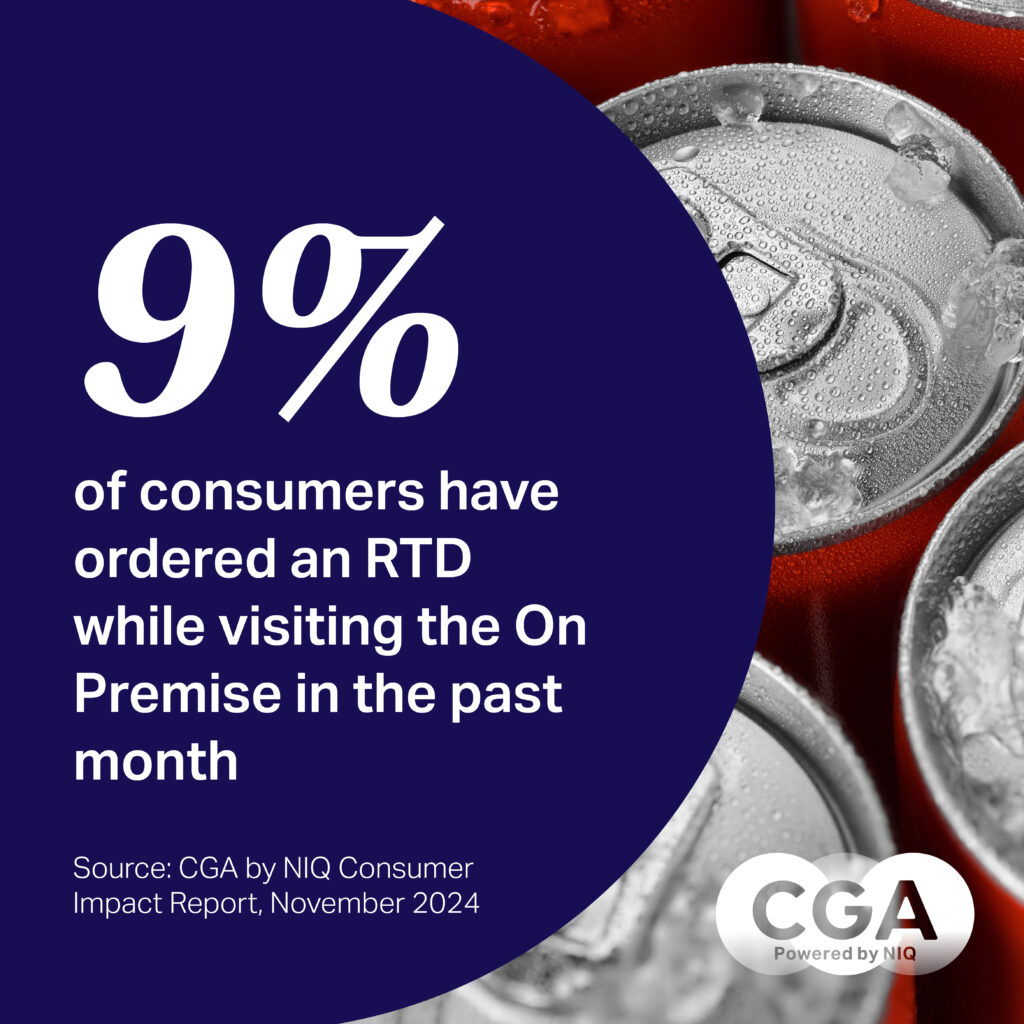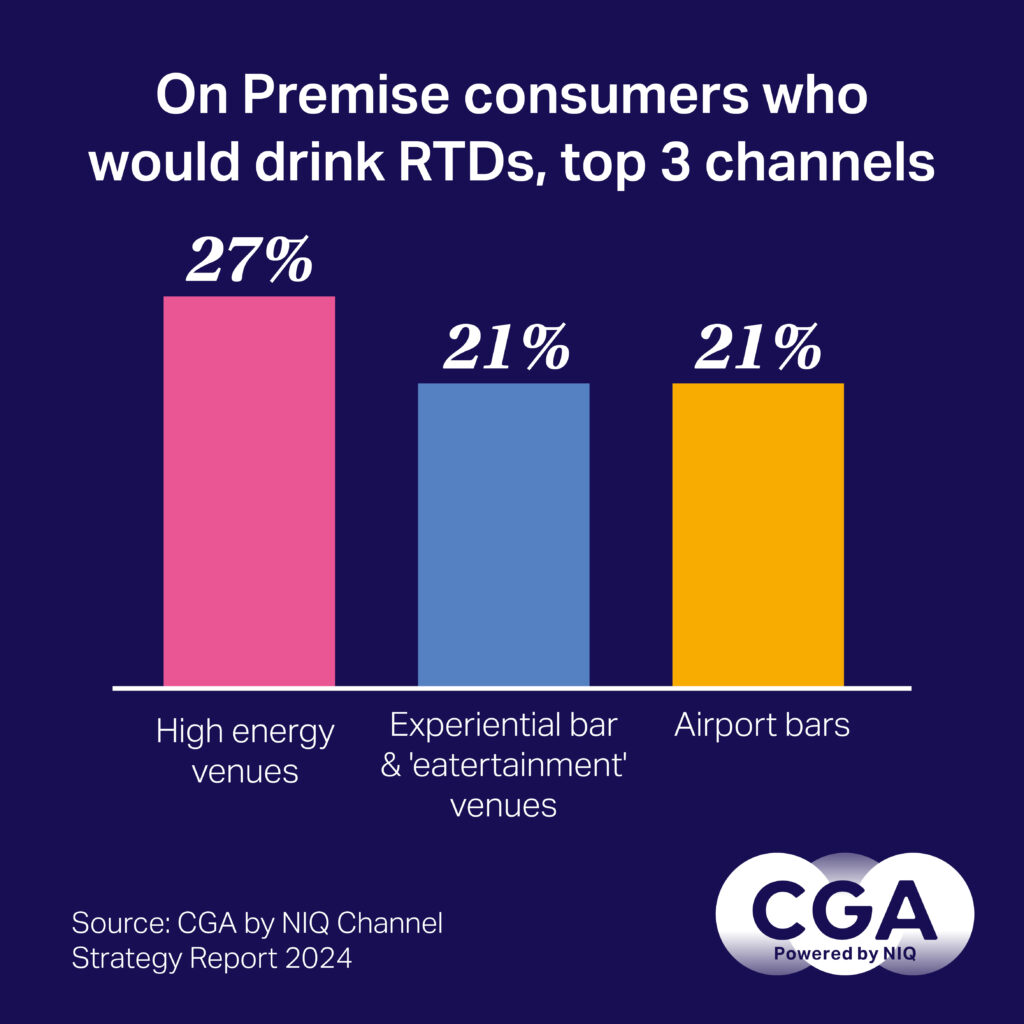
I’ve been living in the U.S. for almost ten years now, and in that time, I’ve seen some major shifts in how people drink and what they’re reaching for in the BevAlc world. We’ve watched the rise (and the eventual cooling off) of craft beer, the mainstream takeover of tequila, the rise of moderation as a trend, and of course, the QR code boom—can we *really* say we’ve forgotten 2020 yet?! But if there’s one thing that’s been hard to ignore, it’s the explosion of ready-to-drink (RTD) cocktails. This trend has arguably outpaced them all.
In this column, I’m diving into why RTDs have taken off so quickly, and whether this cocktail-in-a-can craze is ready to make a real splash in the on-premise world.
A $13 Billion Category Shaping the Future of Grocery Store Shelves
Naming these drinks can get a little tricky. Some folks call them RTDs, others prefer “pre-mix,” and a few companies have come up with their own unique labels. But no matter what you call them, one thing is clear: their impact on grocery store shelves is undeniable.
According to NIQ RMS Off Premise data, the RTD category is now worth over $13 billion in annual sales, growing 5% in a market that’s generally on the decline. That’s a solid 12% of the total alcohol market, which is seriously impressive.
This includes everything from malt-based hard seltzers and FMBs to spirits-based and wine-based RTDs. While hard seltzers are now in a bit of a slump with sales down 14%, they still account for the largest share, making up 27% of total RTD sales. But the real growth story is in spirits-based RTDs, which are seeing an impressive 21% annual growth.
Are Bars and Restaurants Ready for the Canned Cocktail Revolution?
Convenience and a thirst for innovation are clearly driving RTD sales in supermarkets, but what about bars and restaurants? Can these products really find a place in a channel where experience is everything and bartenders are expected to craft drinks from scratch? Can RTDs truly make a mark in the on-premise world? Well, the short answer is…it depends.

Right now, RTDs account for just 1.2% of all dollars spent in the on-premise channel, so it’s still a small slice of the pie. But there’s some real growth happening, with the category gaining 0.5 percentage points of market share—mostly at the expense of spirits and wine. While casual dining, premium bars, and fine dining have seen more modest upticks, it’s nightclubs and other experiential venues where RTDs are really gaining traction.
Late night and High Energy Venues lead to Opportunities
In late night venues such as nightclubs, portability, consistency, and speed of serve are all particularly valued. RTDs have this in abundance, and this makes the channel the star performer adding 0.9 percentage points of share of total Bev Al sales year-on-year. The consumer data backs this up too. Our most recent Channel Strategy Reports show that high-energy venues are the most popular type of venue for RTD consumption, with 27% of visitors considering purchase.

One of the fastest-growing segments in the on-premise market is also one of the hardest to define: experiential or “eater-tainment” venues. These spaces, which combine dining with entertainment, are gaining significant traction. The key distinction is that eating and drinking are not the sole reason consumers visit; rather, the experience itself is the draw. Think mini-golf, bowling, shuffleboard, or even axe-throwing. Naturally, these venues demand quick, convenient service, making RTD beverages a perfect fit. Our Channel Strategy report reveals that 21% of consumers would choose to drink RTDs in these types of venues.
Other high-potential channels for RTD consumption fall into the same experiential, non-traditional category: airport bars, outdoor events, and stadiums/arenas. These environments align well with quicker, no-nonsense serves.
Are RTDs Here to Stay in the On Premise?
So, are RTDs a permanent fixture in the on-premise space? I’d say yes—but with some important caveats. For RTDs to truly thrive, success will depend on targeting specific types of venues and focusing on three key needs:
- Fast Service & Portability: RTDs must capitalize on the demand for quick, efficient service, driving consumption in venues that prioritize convenience.
- Aligning with Consumer Missions: The portability of RTDs should match common consumer activities, such as attending live music events, or watching sports, where convenience is key.
- Unlocking the Experiential Bar Opportunity: In venues focused on experiences—like bars that host activities—the portability of hard seltzers and RTDs complements the mobile nature of patrons, who are often on the move while socializing and engaging in entertainment.
By tapping into these needs, RTDs can solidify their place in the on-premise category.
Originally published in Bar and Restaurant news




